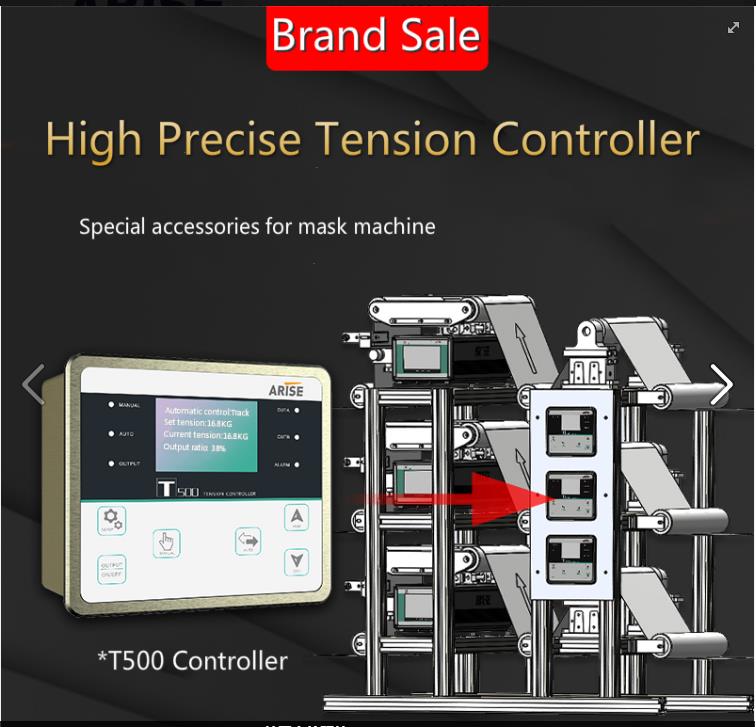A Comprehensive Introduction Of Tension Controller

In the industries of paper, printing, textile, packaging, metal and wire & cable, in order to maintain high production efficiency, a basic tension controller is essential. It has wide applications, especially in the most related coiling and unwinding industries which need a perfect web tension controller to improve production efficiency and product quality.
What Is The Tension Controller?
Tension control refers to the ability to control the tension when the raw materials are transported on the device. In the coiling industry, the tension always needed to be controlled for production requirements, and the tension controller is a type of device for tension control. It has the advantages of small error, fast responding speed, high accuracy and simple adjustment. There’re three types of tension controllers including automatic tension controllers, semi-automatic tension controllers and manual tension controllers.
The basic composition of the tension control system
A typical tension control system is mainly composed of a tension controller, a tension reader, a tension detector, a magnetic powder brake, and a clutch. According to the loop, it can be divided into open loop, closed-loop, or free ring tension control system and it can be divided into types of ultrasonic, floating roll, track arm, according to the monitoring method of different coils.

Working principle of the tension controller
The tension controller can directly set the value of the tension control, and then input the signal of the tension sensor as a feedback value. Input the error to the PID or other manipulations for dealing with, and output to the actuator to control.
The tension controller system is controlled between the units of the magnetic powder clutch and must maintain a consistent ratio at the speed, a constant tension among the materials, or controlling tension according to the specified regularity, to ensure high-efficiency productivity and superior product quality.
Why The Tension Controller Is Important In The Coiling and Unwinding Industries
In the production process of paper, textile, plastic film, wire, printing products, tape, metal strip, etc, the roll of the material or wire is crucial to the quality of the product, and constant tension control is required for this purpose, which can make the products withstand the best tension in the process of winding and remain unchanged from the beginning.
The tension controller can be widely used in various applications where tension is precisely measured, with flexible and extensive applicability. The controller compares the deviation of the tension setting value and tension measurement. The output is adjusted through the proportional integration algorithm calculation, so that the web tends to be the setting value, thereby achieving the purpose of constant tension control. Therefore, it is very important to set the appropriate value of proportional integral and stationary zone parameters for the stability of the tension system.
The stability of constant tension control is directly related to the quality of the products. If the tension is too large, the stretch deformation of the processing material will be caused. If the tension is too small, it will deform the stress between the layers of the material and the layers, resulting in the uniform unwinding, affecting the quality of processing.
The Debugging Method Of The Tension Controller
The rewinding & unwinding, or transfer of the tension controller is based on the balance of tension variation in different industries, for high-efficiency production, the debugging method of the tension controller is critical.
The debugging method of the tension controller can be done in the following steps.
1. Programming the related parameters of tension measurement.
2. Make sure the tension controller is installed and the wiring is turned on the power.
3. By manual adjustment, check the system to confirm that the tension is normal and the actuator is operating normally.
4. Ensure the installation of the tension sensor and the wiring is correct. Check whether the signal of the tension sensor is normal.
5. Adjust the PID parameters according to the operation situation for guaranteeing the balance operation of the tension control system.
6. Calibrate the 0 points and the full scale of the tension signal, and ensure the normal display of the tension.
When the tension controller is automatic and the tension is greater than the setting value, the output current value is reduced. When the tension is smaller than the setting value, the output current value increases and the current value is increased with the increased tension in the system, which is greater than the setting value, the output current decreases, and the value of the tension will be reduced, thereby recirculating, achieving automatic control.
For more professional knowledge, please visit the article page of important tension controller for the coiling industry.
- Art
- Causes
- Crafts
- Dance
- Drinks
- Film
- Fitness
- Food
- Games
- Gardening
- Health
- Home
- Literature
- Music
- Networking
- Other
- Party
- Religion
- Shopping
- Sports
- Theater
- Wellness


